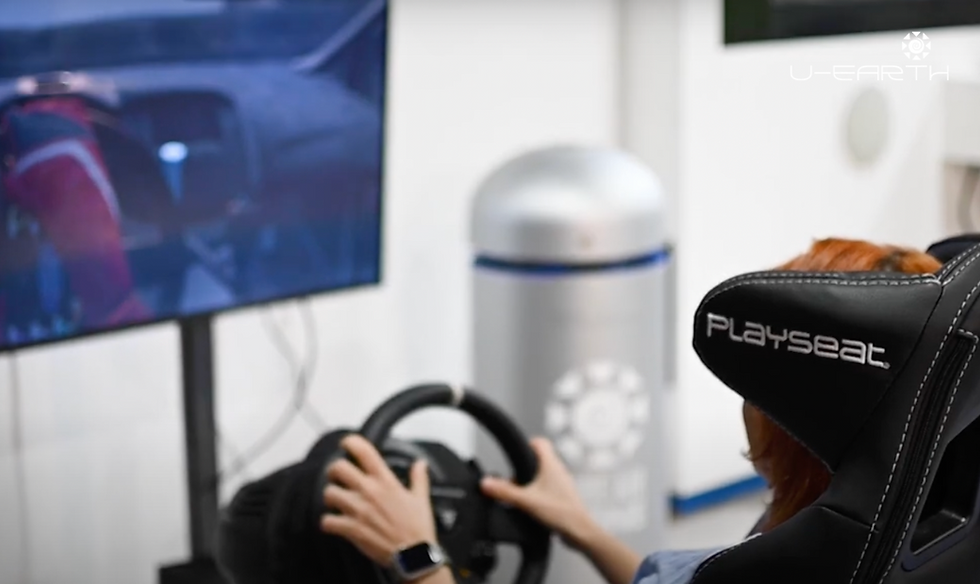Decontaminate the Environment with Safe UV Light
- U-Earth Team

- Jan 2, 2023
- 3 min read
One of the many difficulties of maintaining air quality, other than polluting agents, is the presence of viruses and bacteria. Much has been said, but not everyone knows that light is a ‘technology’ itself, able to sanitise both air and surfaces from pathogenic microorganisms. Learn more about UV light (and find a surprise at the end of the article!).
The sun produces three types of UV radiation, which must be understood in order to fully understand the possibilities of using UV light to decontaminate the environment and improve air quality.
UVA (Long-Wave) UV light
UVA, otherwise known as Long-Wave UV light, accounts for 95% of UV radiation that reaches Earth. Used for tanning beds, it can penetrate your skin’s second layer, which can cause damage if direct exposure is prolonged, resulting in premature skin ageing, wrinkles and cancer.
UVB (Medium-Wave) UV light
UVB (Medium-Wave) UV light is partially blocked by the Ozone layer but some rays still get through. They damage the outer layers of the skin, and are responsible for tanning. However they can also cause more prolonged skin damage, typically sunburn but also blistering and even cancer if proper protection is not used.
UVC (Short-Wave) UV light
UVC or Short-Wave UV light is one of the best technologies to sanitise air, water and surfaces.
Traditional UVC light technologies are divided into two groups:
Those sanitising the air by sucking it in and conveying it through light before reintroducing fresh air back into the environment;
Those directly sanitising surfaces in contact with light, which can only be used in empty environments because the light can be harmful to people.
DNA is the ‘blueprint’ for all genetic information, carrying the instructions needed for every organism to grow, develop, function and reproduce and that RNA converts this data stored within DNA to build protein. Microbes are no different, so when they come into contact with Short-Wave UV light, UVC rays penetrate their cells, emitting electromagnetic energy which alter microbial DNA, forming specific molecules (known as Thymine dimers) and disrupting the ability to reproduce and survive with a process that goes like this: 1. High energy from a UV-C wavelength is absorbed into the RNA and DNA of the cell.
2. This energy absorption damages nucleic acid, disrupting the microorganism’s DNA.
3.DNA’s disruption interferes with transcription and replication. 4. The microorganism cannot perform all vital cellular functions, which means it cannot reproduce.

Purify the environment with the power of light
From our research, we found that the wavelength of light of 222nm is effective against bacteria and microbes and doesn’t penetrate human skin.
As shown in this article, we are facing an era where new generation devices can exploit the features of a lamp, emitting UVC rays that kill the pathogenic agents or block their ability to reproduce. A special screen blocks all radiation (which can be potentially dangerous for eyes and skin), ensuring that only UVC rays pass through, making it safe to use. In this way, it can be used in crowded places, combining the benefits of the two other groups of technology by sanitising both air and surfaces at the same time without presenting risks for health.
This unique set of features makes it usable in almost every common area, including the most crowded where cross-contamination is more likely to occur, such as hospitals, schools and public transport.
Thankfully, recent studies confirmed that SARS-CoV-2, responsible for the COVID-19 pandemic, can be inactivated by UVC rays, in particular the wavelength of 222 nm, which registered excellent disinfectant performance, in addition to being harmless to human eyes and skin.
And now…we’re pleased to announce that a new add-on has been added to the Pure Air Zone suite: stay safe and protected with U-Lamp's advanced germicidal light technology. Read more!




Comments